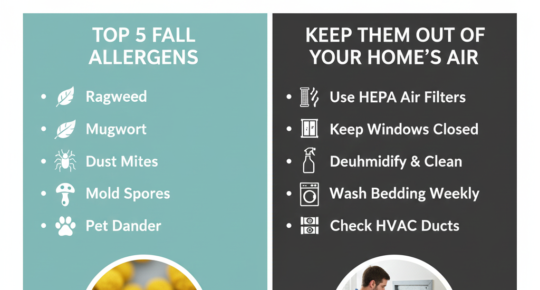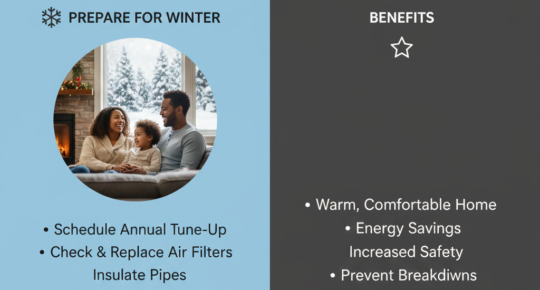Last our news

Fall in New Jersey brings beautiful foliage and cooler weather, but it also means sneezing, itchy eyes, and congestion for many of us. Fall allergies can be tricky because we deal with everything from coastal ragweed to mold from damp leaves. If you know what’s triggering your symptoms, you can do something about it. You can’t control what’s happening outside, but you can make
-
 Solving the Split-Level Problem: How Paramus Homeowners Can Finally Balance Their Home’s Temperature20 November, 2025
Solving the Split-Level Problem: How Paramus Homeowners Can Finally Balance Their Home’s Temperature20 November, 2025Is your upstairs bedroom unbearably hot while your downstairs family room feels like an icebox? If you live in a split-level home in Paramus, this probably sounds familiar. These temperature swings aren’t just uncomfortable, they’re built into how split-level homes work. But you don’t have to live with it. HVAC zoning technology fixes the temperature imbalance that’s frustrated homeowners for decades. Why Split-Levels Have
-
 The Trenton Historic Homeowner’s Guide to Modern HVAC20 November, 2025
The Trenton Historic Homeowner’s Guide to Modern HVAC20 November, 2025If you own a historic home in Trenton, you already know what makes these houses incredible. High ceilings, original woodwork, hand-finished plaster walls. These details don’t exist in modern construction. But when July hits or January rolls around, keeping comfortable gets tricky. You can add climate control without tearing apart what makes your house special. Most people think they have to choose between keeping
-
 Getting Your Home Ready for White Plains Winter Wonderland: An HVAC Checklist20 November, 2025
Getting Your Home Ready for White Plains Winter Wonderland: An HVAC Checklist20 November, 2025The lights are going up at Kensico Dam Plaza in Valhalla, and Westchester’s Winter Wonderland is coming back for another season. For families in White Plains and nearby towns, this marks the start of holiday activities. After walking through the light displays, coming home to a warm house makes the evening complete. Getting your heating system ready before it gets cold matters for comfort
-
There’s something appealing about the ranch homes throughout Toms River. These single-story houses from the ’50s, ’60s, and ’70s still dot the neighborhoods, practical layouts, manageable square footage, and the kind of design that made them popular during the post-war building boom. If you’re looking at ranch homes for sale, you’ll find plenty still standing strong. But here’s what most ranch owners don’t think
-
The Pine Barrens are one of New Jersey’s natural treasures. Stretching across Ocean, Burlington, Atlantic, and Camden counties, this ecosystem offers hiking trails and wildlife viewing just minutes from home. For Toms River residents, the Pinelands are a source of local pride. But every spring, things get messy. Late April through May brings what locals know all too well: yellow dust everywhere. Cars, patio
